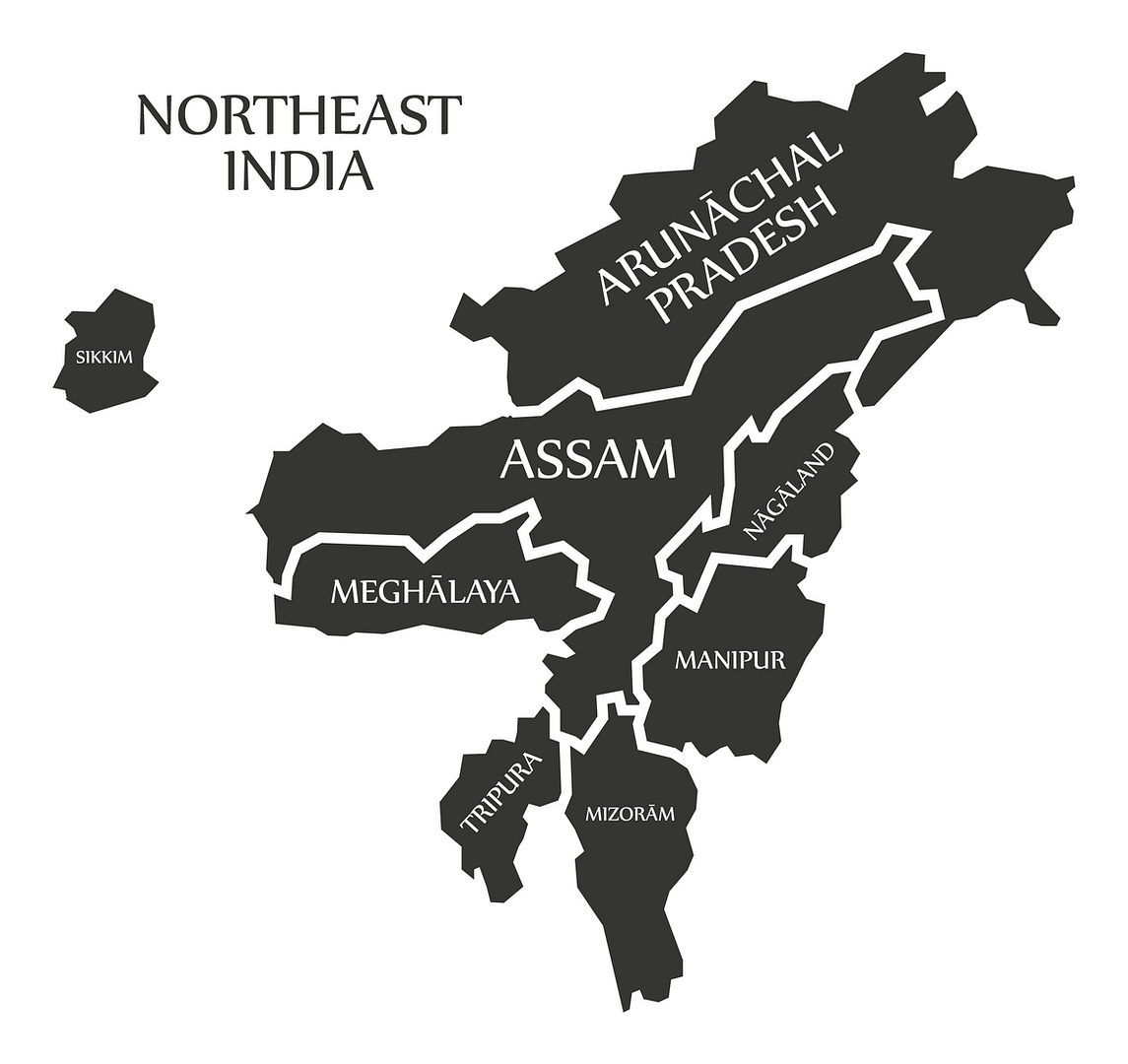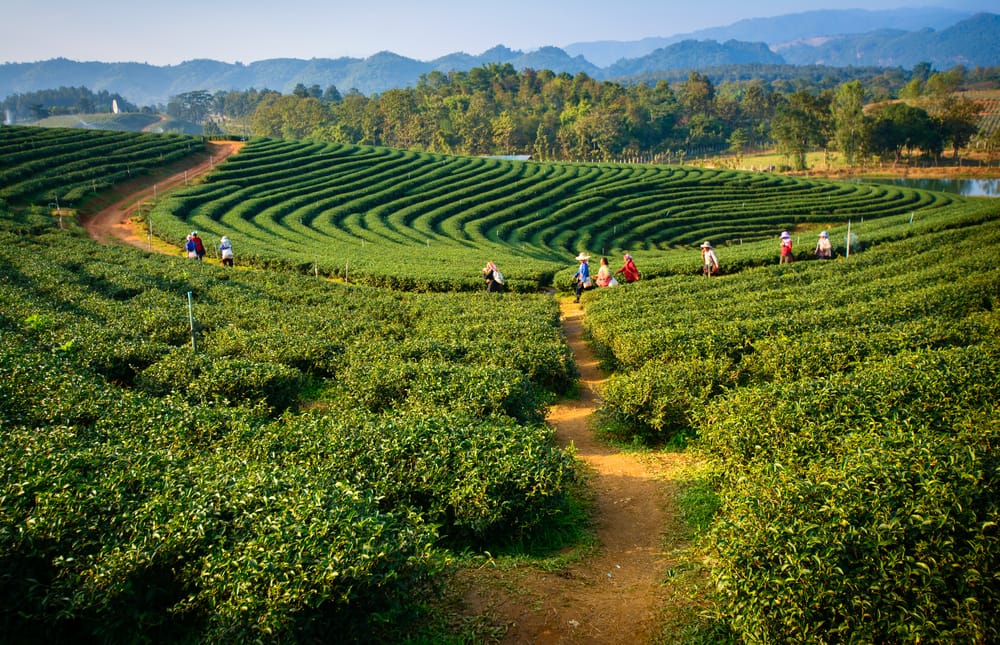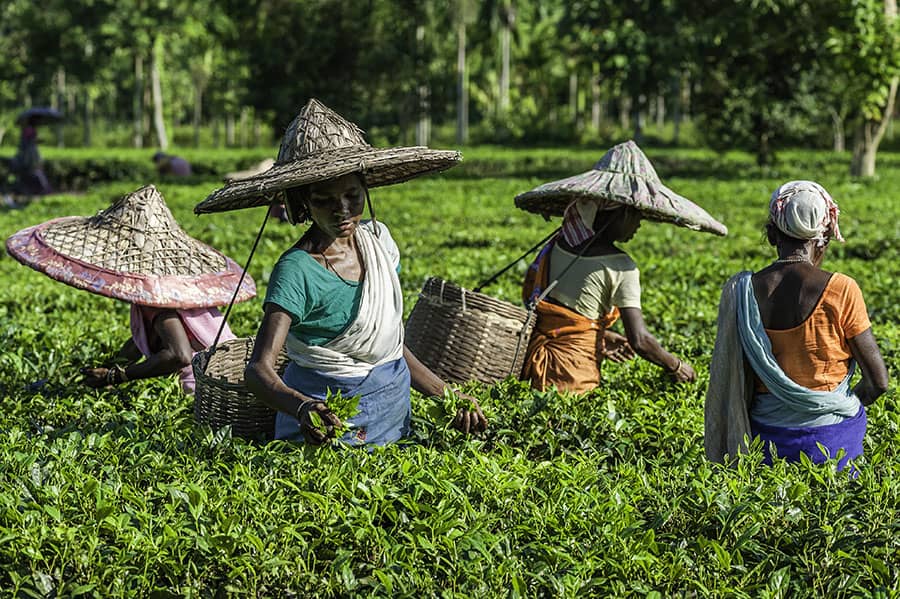The captivating and enchanting states of North-east India, which remain unexplored, hold immense beauty and intrigue. Known as the Seven Sisters, these states include Arunachal Pradesh, Assam, Manipur, Meghalaya, Mizoram, Nagaland, Tripura, and the brother state of Sikkim. This region is considered the most mysterious and breathtaking in all of India. It is connected to the rest of the country by a narrow strip of land situated between Bhutan and Bangladesh. Due to their remote location, permit requirements, and ethnic tensions, these destinations are often overlooked and remain among the least visited in India.
History of North-East India

Until the 1960s, the entire north east comprised of two parts – The north east frontier agency which is now known as Arunachal Pradesh and Assam. But later on, it was further divided into 7 states and now officially Sikkim as well which makes a total of 8 states.
Must Read: Northeast India– A True Explorers’ Delight
About the 7 Sisters & 1 Brother
1. Assam

Assam is renowned for its tea plantations, diverse flora and fauna, and the remarkable Kaziranga National Park, a UNESCO World Heritage Site. The most sought-after experience for tourists is encountering the one-horned rhino, as well as enjoying boating in the stunning Dawki River near the Indo-Bangladesh border. Majuli, located in Assam, holds the distinction of being the largest river island in the world. Situated along the banks of the Brahmaputra River, this place offers a delightful combination of serene landscapes, tea gardens, enchanting mountain ranges, paddy fields, picturesque countryside, traditional wooden boats and houses, and a vibrant and colorful culture and traditions.
Capital City: Guwahati
Must visit: Kamakhya Temple, Manas National Park, Assam State Zoo & Botanical Garden, Pobitora Wildlife Sanctuary, Molai forest, Phatobihu, Faato Bihu – Mohghuli Chapori
You are required to: Take a cruise along the Brahmaputra river, go shopping in Jorhat, embark on a wildlife safari at Manas National Park, explore the ecotourism offerings of Majuli, visit Kamalabari Satra and Dakhinpat Satra, and also visit Tengapania.

2. Meghalaya
Meghalaya, often referred to as the Scotland of East India, is renowned for its breathtaking beauty. It is recognized for hosting Asia’s cleanest village and is also famous for Cherrapunjee, one of the world’s wettest locations. Meghalaya’s captivating attractions include living root bridges, stunning waterfalls, and some of India’s longest caves, making it an irresistible destination.
Capital City: Shillong
Top Recommendations: Mawlynnong, Laitlum Canyon, Double Decker Living Root Bridge, Balpakram National Park, Umiam Lake.
Must Do: Trekking on David Scott trail, rafting in Barapani Lake, kayaking on Kynshi River, camp on Khasi hills
3. Arunachal Pradesh
One of the most remote states, the people of Arunachal Pradesh are mainly of Tibetan origin. The Buddhist monastery of Tawang, Perched at 10,000 feet above sea level, overlooks the Tawang valley near Bhutan is the most popular attraction in Arunachal Pradesh. It has a great collection of Thangkas (Tibetan Paintings). Festivals namely Torgya festival, Dree Festival, Myoko, Ziro, or Tawang festival bring the place to life.
Capital City: Itanagar
Top Attractions: Tawang Monastery, Pakhui Wildlife Sanctuary, Namdapha National Park, Dirang, Parasuram Kund, Daporijo
Please complete the following activities: Experience the Ziro Music Festival, hike to Ziro, hike to Sella Pass, explore Thangkas at Tawang Monastery, and visit the beautiful and unique Mechuka.
4. Nagaland
Nagaland, known for its vibrant culture, is inhabited by 14 diverse tribal communities. Among the seven sisters, it stands out as a lively destination. Many tourists choose to visit the heritage village of Longwa, renowned for its fascinating collection of skulls. Additionally, from this village, one can catch a glimpse of the neighboring Burmese territory.
Capital City: Kohima
These are the recommended places to visit: Mon, Longwa, Veda Peak, The war cemetery, Kohima Museum, Triple Falls, Tuphema Village, Kachari Ruins.
Must Do: Trekking in Dzoukou valley, soaking in peace at Khonoma, wildlife safari at Intanki Wildlife Sanctuary, hiking at Japfu Peak.
5. Mizoram
Mizoram boasts the highest literacy rates in India and is primarily inhabited by Christians. The scenery of this area is incredibly picturesque, featuring abundant paddy fields, bamboo trees, and dense jungles. One of Mizoram’s most renowned festivals is the Chapchar Kut festival. The Blue Mountain National Park, located in Mizoram, is well-known for its stunning orchids and rhododendrons that overlook the Chhimtuipui River. Situated at an impressive elevation of eleven thousand feet above sea level, Mizoram offers a truly spectacular view.
Capital City: Aizawl
Must Visit: Phawngpui Hills, Murlen National Park, Dampa Tiger Reserve, Vantawng Falls.
Must Do: Trekking in the Blue Mountain National Park, Visiting the Palak Lake, mountain biking in the Hmuifang Hills.
6. Manipur
Probably one of the least visited places in north-east India, it is known as the Jewel of the east because of its splendid landscapes. Lemon Festival which is held every January in Kachai and the Kang Chingba Festival are quite popular and vibrant.
Capital City: Imphal
Must Visit: Shri Govindajee Temple, Keibul Lamjao National Park, War cemetery, Sendra Island.
Must Do: Boating in Loktak Lake, explore the ancient Andro village, chariot ride in Moreh near the border.
7. Tripura
Tripura is known for its majestic temples and beautiful palaces. The Ujjayanta place is quite popular among tourists for its rich history.
Capital City: Agartala
Top attractions to explore in Tripura include Neermahal, Gumti Wildlife Sanctuary, Unakoti, Jagannath Bari, Tripura Government Museum, and Rowa Wildlife Sanctuary.
You should consider: Exploring Trishna Wildlife Sanctuary, taking a hike to Jampui Hills, browsing through the well-known bamboo and cane crafts, and experiencing boating at Sepahijala Wildlife Sanctuary.
8. Sikkim
Sikkim, recognized as the sibling of the seven sisters, is where you can find the renowned Pemayangtse Monastery and the highest drivable roads at Nathula Pass. Sikkim provides a wide range of exciting and relaxing activities for both adventure enthusiasts and those seeking leisure.
Capital City: Gangtok
Top Attractions: Lake Tsomgo, Gurudongmar Lake, Rumtek Monastery, Pemayangtse Monastery, Zemu Glacier.
Must Do: Backpacking through the Yumthang Valley of Flowers, Check out the Singalila National Park, camp at Goecha La Pass.
Food of North-East India
The cuisine in the entire North-east region is generally not very spicy, as there is a lack of spices or masalas that grow in the area. However, there is one exception to this, which is the bhut jolokia, also known as the king chilli. It is one of the hottest chillies in the world and is used generously in most of the states. Some other popular dishes from the north-east include Tibetan momos, Thupkas, Rice (which is their main staple food), xaag (leaf vegetables), fish tenga (a souring agent), pitika (a mashed vegetable dish), khorika (skewered meat), doh neiiong (pork with black sesame seeds), jadoh (rice cooked in meat stock with pork), churpi (fermented rock-hard yak’s cheese), lai patta (mustard spinach), dried river fish, anishi (dry yam leaves), akhuni (fermented soybean), singju (raw papaya and chickpea salad), iromba (fish and vegetable chutney), and many other interesting dishes.














